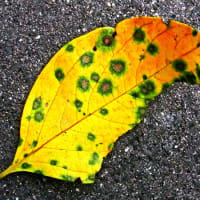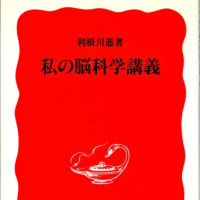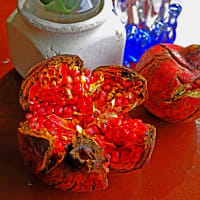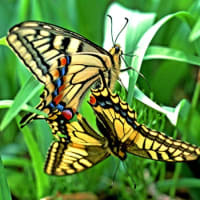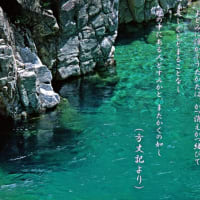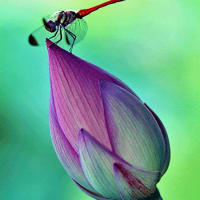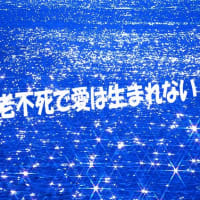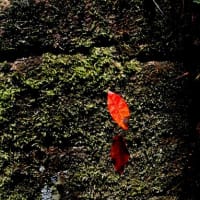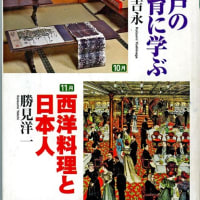24年前の想い出です。
飛び立つツバメが朝の教科書
「おーい、早くしろーっ」
ロビーで朝食を待っていた団員(小学4年生~6年生)をあわてて呼び、宿舎前の電線を指さします。
「ほら、南の国へ飛び立つツバメの子どもたちだ。初めての長旅だから、一生懸命練習している。途中で力尽きたら海の上だ。死ぬからね。大人になる前には誰にも厳しい試練がある。みんなもがんばらないとね」
話は続きます。
「つばめが家の玄関や家の中まで入って巣をつくるわけは、天敵が少ないからだといわれている。また、春に南の島からやってくるツバメたちは八月頃までに『二回』子育てして、生まれた子ツバメたちは、みんなで大群になって、また南国を目指して旅立つ。一週間くらい遅れて親ツバメがその後を追っていくそうだ。子どもたちを先にやって、お父さんやお母さんは後からだ。子どもたちが先に旅立つんだ」
年間を通じた課外学習のメインでもある「渓流教室」では、二泊三日の日程で、赤目四十八滝に続く渓流でカワムツやオイカワ・ヨシノボリ・沢ガニを捕まえたり(後で胃袋にもおさまります)、ヒグラシの声をBGMに、岩の上からきれいに澄んだ水の中に飛び込んだりと、一日中遊びほうけます。とはいっても 、毎年必ず何かハプニングも待っているので、「遊び」は決して遊びだけに終わりません今回の朝のツバメも子どもたちの教科書です。
蝉やオニヤンマの羽化はもちろん、マムシの赤ちゃん、オオサンショウウオの赤ちゃん。毎年渓流教室の二日目に昼食でお世話になる美晴亭の下では甲羅の直径が30cmもあるようなスッポン夫婦と彼らの小さな子どもがゆったりと泳ぎ、向こう岸では、エメラルドグリーンのカワセミがオイカワをねらってダイビングの機会を伺っています。
その後ひとしきり渓流で遊んで切り立った岩肌を見ながら川沿いの道を帰れば、「雨と晴の境目」を通ることができた不思議な経験も一度ではありません・・・。
こうしたできごとに出会う度に、学びの周辺、その奥行きの広さや深さ、さらに「生きている」という生命の一面を子どもたちに伝えることができます。
樹が教えてくれる南と北、そして生きること
子どもたちの「学習内容」は「教科」から発生したものではありません。私たちと自然とのやりとり、そして生きてきた経験の中から抽出され獲得された知識や知恵、その結晶です。知識が先ではなく自然が先です。
自然に触れて自然体験を重ねることで子どもたちが手に入れる「学び」は、机上の学習に終わらず、彼らの身体にしっかり根付いていきます。

教壇で話す「言葉だけの学習」。参考書や問題集だけのワーク。あるいは授業に工夫がなく、子どもたちにとって「実感という後ろ盾のない学びのくりかえし」で、果たして彼らの学習に対する興味をどれだけ引き出せるのか。
私たちにとって一生続かなければならない「学び」のたいせつさを実感させ、学び続ける意欲を彼らの中に呼び起こす力がどれだけあるだろうか。バランスの良い発達や成長、学ぶおもしろさや学ぶことに対する興味の持続という意味から考えても、教室や教科書だけでは、どうしても限界があります。
課外学習の里山に向かうと、何十年・何百年と風雪に耐え力を蓄えた樹木がしっかりと根を張り、大きく枝を広げています。
子どもたちに問いかけます。
「磁石がない。曇ってて太陽も出ていない。だけど、自然に大きく育った木々を見れば東から南の方角がわかる、どうしてだとおもう?」
みんなは真剣に考えますが、なかなかわかりません。
「枝の付き方や育ち方を見てごらん。枝が大きく育ち、たくさんついているのはどっちの側だ?」
しっかりと枝振りに注目し観察し始めた子どもたちは大きく枝の張りだしている方向を見つけます。
「生きるために一生懸命努力するのは植物だって同じだ。大きくしっかり育つためには、できるだけ効率よく光を受け、光合成して養分をつくらなければならない。だからこっちが南。東から南に枝を大きく張り出し、たくさん葉をつけるんだよ」。

こういう体験を繰り返すことで、子どもたちは次第に注意力の大切さと観察することのおもしろさに目覚めていきます。「環覚」の育成です。
太陽が東の空から出て南の空を移動し西の空に沈む。単に「知っていること」に終わらず、実際に東と南が子どもたちの前に姿を現します。太陽が東から出て西に沈むということは知っていても、ただイラストや知識として終わっていることが多いのではないでしょうか。
こうして太陽に応える植物の姿を見ることで光合成が植物にもっている意味がはっきりわかり、生物が生きるということの一生懸命さと切実さを肌で感じることができます。そのとき、子どもたちは太陽がもたらすエネルギーを自らの身体の温かさとしても感じています。
木々が太陽の光を効率的に有効に使おうとしていること、それは生命を永らえる、生きていく方向であること、自然の中での生物と環境とのやりとりに考えが及ぶとき、こう話します。
「人間も環境からのさまざまな刺激や情報に対して、適応してあるいは備えて自分を育てていかなくちゃいけない。勉強することも、そのうちのひとつだよ」。

課外学習で太陽と植物の関係を実際に見ている経験は、教室での南中高度と日照時間の学習、植物の生長の学習にも現実感とイメージの追い風があり、学習の定着と興味の持続がはかれます。
都会の片隅でも育つ学びのアンテナ
体験学習は郊外の野山だけに限りません。街中の寺院や神社にも、南北だけではなくて生きることや歴史を教えてくれる樹は育っています。探せば公園にもイチョウやメタセコイヤなど、生態や進化・人間との関わりに子どもたちが興味をもちはじめるきっかけになる機会もたくさんあります。
「針葉樹と広葉樹って、この間勉強しただろう?田植えで飛鳥に行ったときも杉とヒノキの葉のちがいを観察したね。針葉樹の葉っぱは針の葉って書くけど、この葉もやっぱり細いね。どうしてだろう?」

文字面では知っていても、実際に針葉樹と広葉樹の葉のちがいをていねいに見た経験のある子はほとんどいません。子どもたちは、針のような小さな葉を真剣に見つめます。
「たしか理科のテキストにも、雨が少なく寒い地方に針葉樹林帯ってあったね?」
その問いかけに、子どもたちの頭はめまぐるしく回転しはじめます。
「雪?」
「そうだ、雪が積もったら落とさなくてはいけないね。それと葉の中にたくさん水を抱えると凍ってしまう。水の少ないところでは、できるだけ気孔から水分を失わないようになっている。だけど、細くて葉が少なければ、光合成のはたらきも少なく、大きく育てない。だから針のような葉っぱをたくさんつけることで、補っているんだろうね」。
針葉樹は、夏の渓流教室の際のヒノキや杉林の散歩で大きく存在感が増します。
生き物の少なさ・子どもたちがよく知っている虫はヒグラシしかいないこと、針葉樹の葉が魚屋さんやお寿司屋さんのショーケースの下で活躍している意味・フィトンチッドに話が進みます。
そして、日本建築で日本のヒノキや杉を使えば数年間は蚊が入ってこないという大工さんの話や日本家屋につながり、宮大工の寺院建築や建築材料・樹の育ち方によって使う場所がちがう話。
また、杉林は枝打ち・間伐の生きた教材です。花粉症が増えた理由や日本の木材が使われなくなってきた理由・その話題は外国木材の輸入による地球温暖化の理解を手助けします。
教科書の知識はただの受験の材料ではなくなります。子どもたちが今立っているところ、そして自らの問題に変わります。
対象は樹木だけではありません。
たとえば街中、歩道の脇、植え込みや庭先に小さな露草を見つけることはできます。
可憐な露草の涼しげな色や変わった形に子どもたちの目が向けば、図鑑を開く機会も出てきます
感じる心・見つける目をぼくは『環覚』と呼んでいますが、ふだんの小さな発見・注意力から「調べること」がはじまり、「考える力」が育っていきます。
「露草」の項目を開けば、単子葉植物であることがわかります。らしからぬ幅広の葉が印象に残り、古来の染め物の材料でもあるという記述は、そのすがすがしい藍色と可憐な姿ともに子どもたちの頭の中に、歴史の引き出しも、一つつくります。
それでは「『環覚』と『学体力』のアイデア」英文版6回目です。
To teachers all over the world 6
In those days of your daily life when you become curious about things and want to know about their surroundings, it is the catalyst of studying. By gaining those strong motivations, you will know the necessity for this studying to pass the entrance examinations as a part of your dreams coming true. The reason why is that you will reflect upon your future, and realize its importance. That is the very opposite from the current abstract learning method using only textbooks.
Before the former words, Dr. Masukawa says this.
You learn not only things written in a textbook, but you must work hard to examine and think about those things that interest you, that’s much better.
(“Masukawa Hakase No Roman Ahureru Tokubetsu Zyugyo ” written by Masukawa Tosihide The Asahi Gakusei Shinbun:This title is translated in English into “Dr. Masukawa’s special class of full of dreams”)
The reason why I underlined these words, is that we must carefully and deeply think about
the meaning behind these words, or behind the another recollections of many great men. I wonder if we would feel interested in or be curious about those things that are written in the textbooks in the same as these great people did.
Most great people and geniuses, who are naturally sensitive and talented enough, usually felt wonderment and interest about things in textbooks. But there are few ordinary people that feel interested or curious about their surroundings that are written textbooks.
However they scarcely tell us how and why they could get such a sense about their surroundings. The reason why is that they had many experiences to think about the things of their surroundings, and since this kind of thought comes naturally, it is of no importance if other people have or don’t have this sense of wonderment.
Even most great people don’t know why and how an ordinary child turns out to be a specially talented child. They never think about that. It becomes natural for them to not think about. Why did Dr. Masukawa feel wonder about things in textbooks? Is it natural? 
But, I conceive, it must have depended on them to be so sensitive about so many observations of their surroundings during childhood. That is to say, most of learning matters written in textbooks are abstractions from things in surroundings or environment. They probably had looked at them (; things written in textbooks) in reality more clearly and in a much better way than ordinary people and had sympathy and felt kinship with them. If not, they wouldn’t feel wonder and have questions, because they didn’t get evidence to compare with each other.
That is to say, children must care about things of their surroundings, and find something interesting, or of wonder. That’s KANKAKU(環覚) for children to get first. KANKAKU motivates them to watch things carefully, examine them and to think about them.
Such many experiences give children the joy of studying. Children aren’t willing to study things unknown and strange by textbooks only like Edison. They have nothing in common with them, and don’t find any reason to study. “Sympathy and Kinship” is “ 馴染みNAJIMI and親近感SINKINKAN” in Japanese.
To make matters worse, at present, there is lots of IT equipment around children, and they must not break this equipment because it is too precious and complicated. Most of them don’t examine or can’t watch what is inside of such equipment.
But it’s the best way for children to learn something important and get such precious things or treasures that they break them and try to rebuild them up again and again. And then, they understand that there are things that they must not and can never break in the world. 
Without breaking out and building up, they have less chance to find the joy of knowing about mechanisms and the make-up of things around them. They don’t know much about things around them.
I doubt that current things in daily life give few opportunities for small children to feel wonders and get a different view point. How often does “Slow thinking” and “Slow watching” are activities prepared for them in their daily lives?
Do you know that those insufficient surroundings for small children lay around them? If you don’t notice that, you would not be able to give your boys and girls a sense of things about their surroundings.
One of most important requirements to give a sense of these things about their surroundings to your children is to give them daily opportunities of “Slow thinking” and “Slow watching”.










